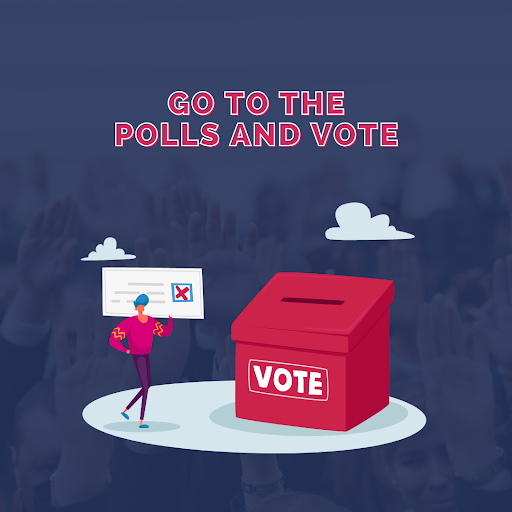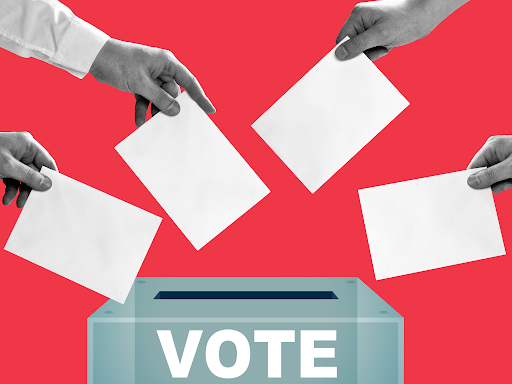Every election cycle presents a unique opportunity to strengthen the very foundations of democracy: informed voter participation. However, the 2024 elections face a complex landscape, characterized by increasing voter apathy, misinformation, and a growing digital divide. This is where design thinking, a human-centered problem-solving approach, emerges as a powerful tool to navigate these challenges and empower a more engaged and informed electorate.
What is Design Thinking?
Design thinking, at its core, is about understanding people’s needs and creating solutions that address them. It’s a non-linear, iterative process with five key stages:
- Empathize: Building deep empathy with the target audience by actively observing, listening, and understanding their needs and pain points.
- Define: Clearly define the problem statement based on the gathered insights from the empathize stage.
- Ideate: Brainstorming a wide range of creative solutions to address the defined problem.
- Prototype: Creating tangible and user-tested representations of the proposed solutions.
- Test: Gathering feedback from the target audience on the prototypes and iterating based on their responses.
How Can Design Thinking Shape the 2024 Elections?
Applying design thinking principles to various aspects of the 2024 elections can yield significant benefits for both voters and the democratic process. Here are some key areas where design thinking can make a difference:
1. Voter Education and Engagement:
- Empathize: Understand the barriers that prevent individuals from registering to vote and staying informed about candidates and issues. This could involve conducting surveys, focus groups, and interviews with diverse demographics.
- Define: Identify the specific needs of various voter segments, such as first-time voters, young adults, minority groups, and individuals with disabilities.
- Ideate: Develop engaging and accessible voter education materials, utilizing various multimedia formats like interactive infographics, podcasts, and social media campaigns.
- Prototype: Create mock online voter registration portals, polling place simulations, and interactive candidate platforms for user testing.

- Test: Gather feedback from diverse user groups on the clarity, usability, and effectiveness of these prototypes and iterate based on their suggestions.
2. Misinformation and Trust:
- Empathize: Understand how voters perceive and assess information online. Analyze the spread of misinformation and disinformation during previous elections and its impact on voter behavior.
- Define: Identify effective strategies to mitigate the spread of misinformation and build trust in credible sources of information.
- Ideate: Develop fact-checking tools, gamified information verification platforms, and partnerships with social media platforms to flag and address misinformation.
- Prototype: Create educational modules that help voters critically evaluate information online, focusing on source identification, bias detection, and fact verification techniques.

- Test: Evaluate the effectiveness of these prototypes with diverse user groups and iterate to create a comprehensive anti-misinformation strategy.
3. Accessible and Inclusive Voting:
- Empathize: Understand the challenges faced by voters with disabilities, language barriers, and those residing in remote locations.
- Define: Identify specific requirements for creating a truly inclusive and accessible voting experience for all citizens.
- Ideate: Develop multi-lingual voting materials, accessible polling place design, and alternative voting options like secure online platforms for eligible voters.
- Prototype: Create low-fidelity prototypes of accessible voting booths, translated voter information materials, and online voting platforms for user testing with diverse individuals.
- Test: Gather feedback from users on the effectiveness and usability of these prototypes and iterate to ensure a seamless and inclusive voting experience.
Benefits of Design Thinking in Elections
Design thinking, a human-centered problem-solving approach, can offer several benefits when applied to the realm of elections:

1. Enhanced Voter Experience by Understanding Voters’ Needs and Challenges:
Design thinking emphasizes empathizing with users. By involving voters in research and testing phases, elections can be tailored to address their specific needs, like accessibility concerns or information gaps. This can lead to improved registration processes, voter education materials, and user-friendly polling stations.
2. Increased Voter Participation by Addressing Barriers to Voting:
Design thinking can help identify and remove obstacles that hinder voter participation, such as complex registration procedures, inconvenient voting times and locations, or lack of awareness about candidates and issues.
3. More Informed Voters by Creating Clear and Accessible Information:
Design thinking can be used to develop clear, concise, and easily understandable communication materials about candidates and issues. This can empower voters to make informed decisions based on accurate information.
4. Increased Trust and Transparency by Building a Collaborative Approach:
By involving stakeholders like voters, election officials, and community organizations in the design process, design thinking can foster collaboration and trust in the electoral system. This can lead to increased transparency and public confidence in the fairness and legitimacy of elections.
5. Innovation in the Electoral Process by Exploring New Solutions:
Design thinking encourages out-of-the-box thinking and encourages exploration of new technological solutions, like online voting platforms, or creative campaign strategies that can enhance the overall electoral process.
It’s important to note that implementing design thinking in elections requires careful planning and consideration of potential challenges, such as ensuring equitable access to resources and avoiding manipulation of information. However, when applied thoughtfully, design thinking can contribute to a more inclusive, efficient, and trustworthy democratic process.
While design thinking holds immense potential to shape the 2024 elections and beyond, its success hinges on collaboration. Election administrators, political parties, civil society organizations, and voters must work together to implement and refine design-based solutions. By remaining focused on the needs of the people, design thinking can become a catalyst for a more informed, engaged, and inclusive democratic future.
Looking Ahead: Beyond 2024
The potential of design thinking in elections extends far beyond the immediate 2024 cycle. Its application can contribute to building a stronger democratic infrastructure for the future by:
- Developing long-term voter education initiatives: Design thinking can inform the creation of sustainable voter education programs that cater to diverse demographics and address evolving challenges.
- Enhancing civic engagement beyond elections: By fostering a culture of critical thinking and informed participation, design thinking can encourage individuals to actively engage in civic activities throughout the year.
- Promoting continuous improvement in the electoral process: Design thinking encourages a culture of iterative improvement, allowing election officials to continuously adapt and refine their processes based on user feedback and evolving needs.
The path to a more robust and inclusive democracy requires continuous learning and adaptation. By embracing design thinking as a collaborative and user-centered approach, we can work together to ensure that our elections are not simply exercises in voting, but empowering opportunities for every voice to be heard and reflected in the decisions that shape our collective future.
Conclusion:
In the journey toward the 2024 elections and beyond, the principles of design thinking offer a guiding light for electoral innovation and democratic renewal. By placing human needs and experiences at the forefront, election authorities can design systems that are equitable, inclusive, and resilient to emerging challenges.
Through empathy, collaboration, and experimentation, we can redefine the future of democracy and create electoral processes that empower every citizen to participate fully in shaping their collective destiny. As we navigate the complexities of the digital age, let us embrace the transformative potential of design thinking to build a more vibrant and inclusive democracy for generations to come.
About the author
A Haryanvi by origin, an entrepreneur at heart, and a consultant by choice, that’s how Ajay likes to introduce himself! Ajay is the Founding Partner at Humane Design and Innovation Consulting (HDI). Before embarking on HDI, Ajay established the Design Thinking and Innovation practice at KPMG India, laying the foundation for his later venture. His 16+ years of professional career spans various roles in product and service design, conducting strategy workshops, storytelling, and enabling an innovation culture. He has coached 50+ organizations and 2000+ professionals in institutionalizing design and innovation practices. He loves to blog and speak on topics related to Design Thinking, Innovation, Creativity, Storytelling, Customer Experience, and Entrepreneurship. Ajay is passionate about learning, writing poems, and visualizing future trends!
We at Humane Design strongly believe in the human ethos and draw inspiration from humans and other elements of nature to design innovative solutions for organizations of all sizes. We will be glad to be your success partner. Email us your requirements at explore@humaned.in.Connect with Us!



